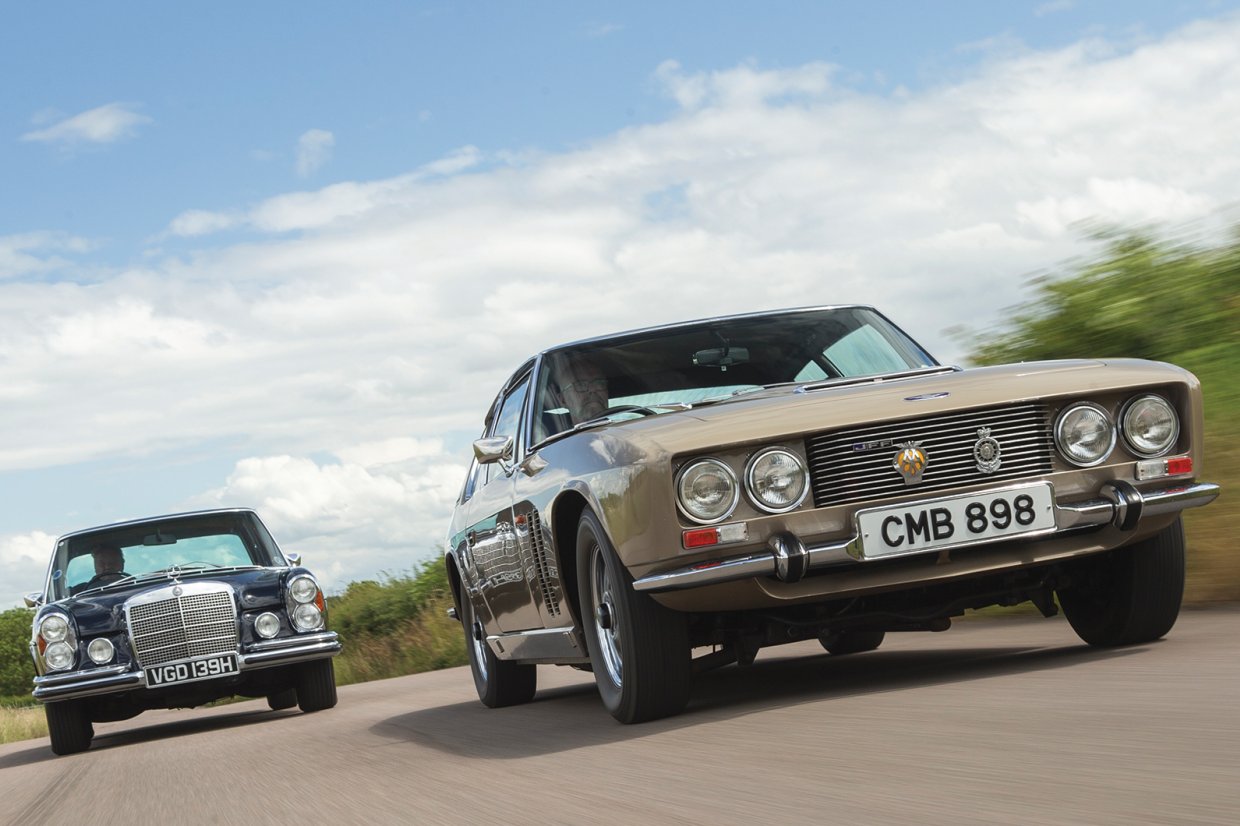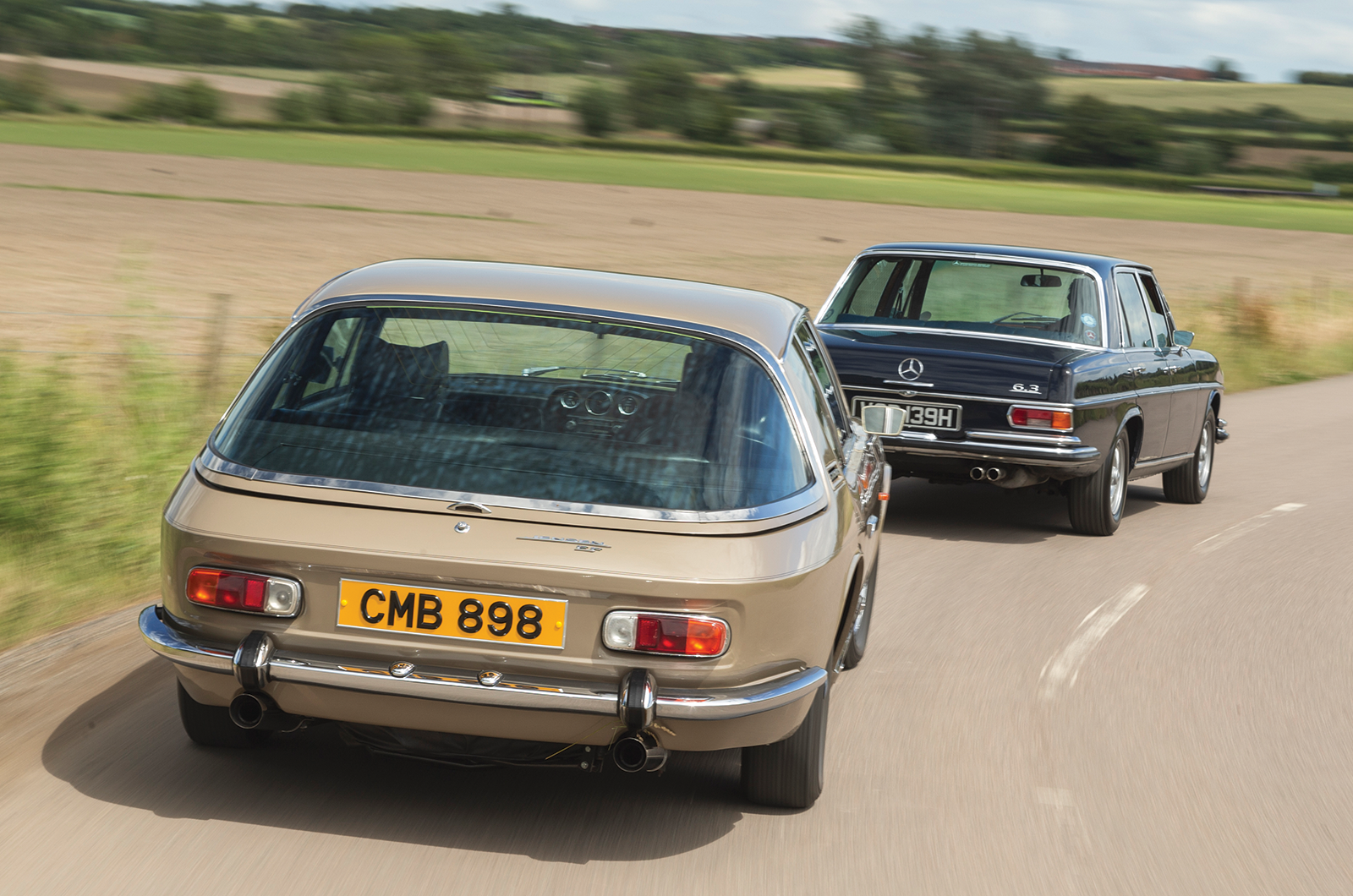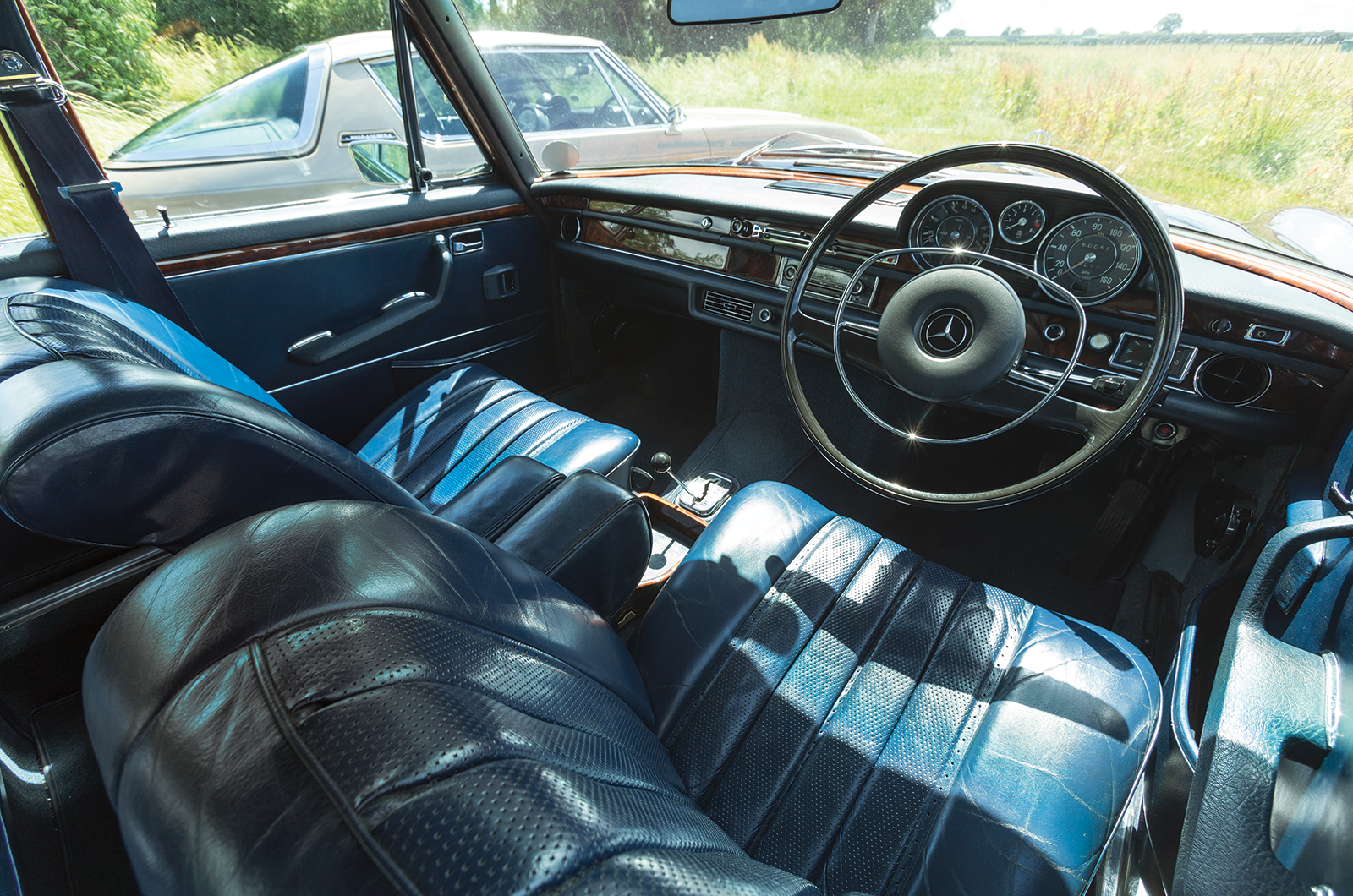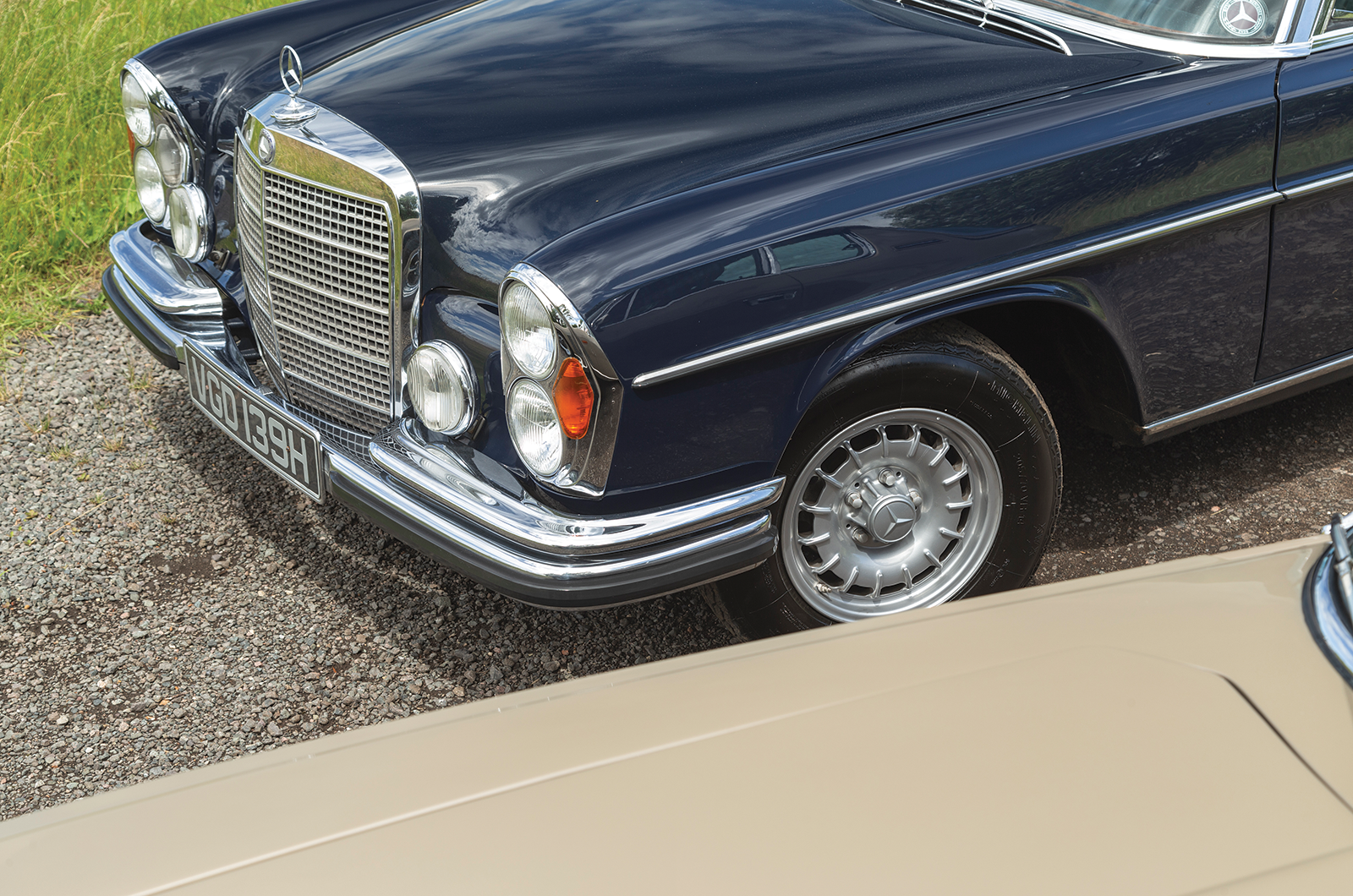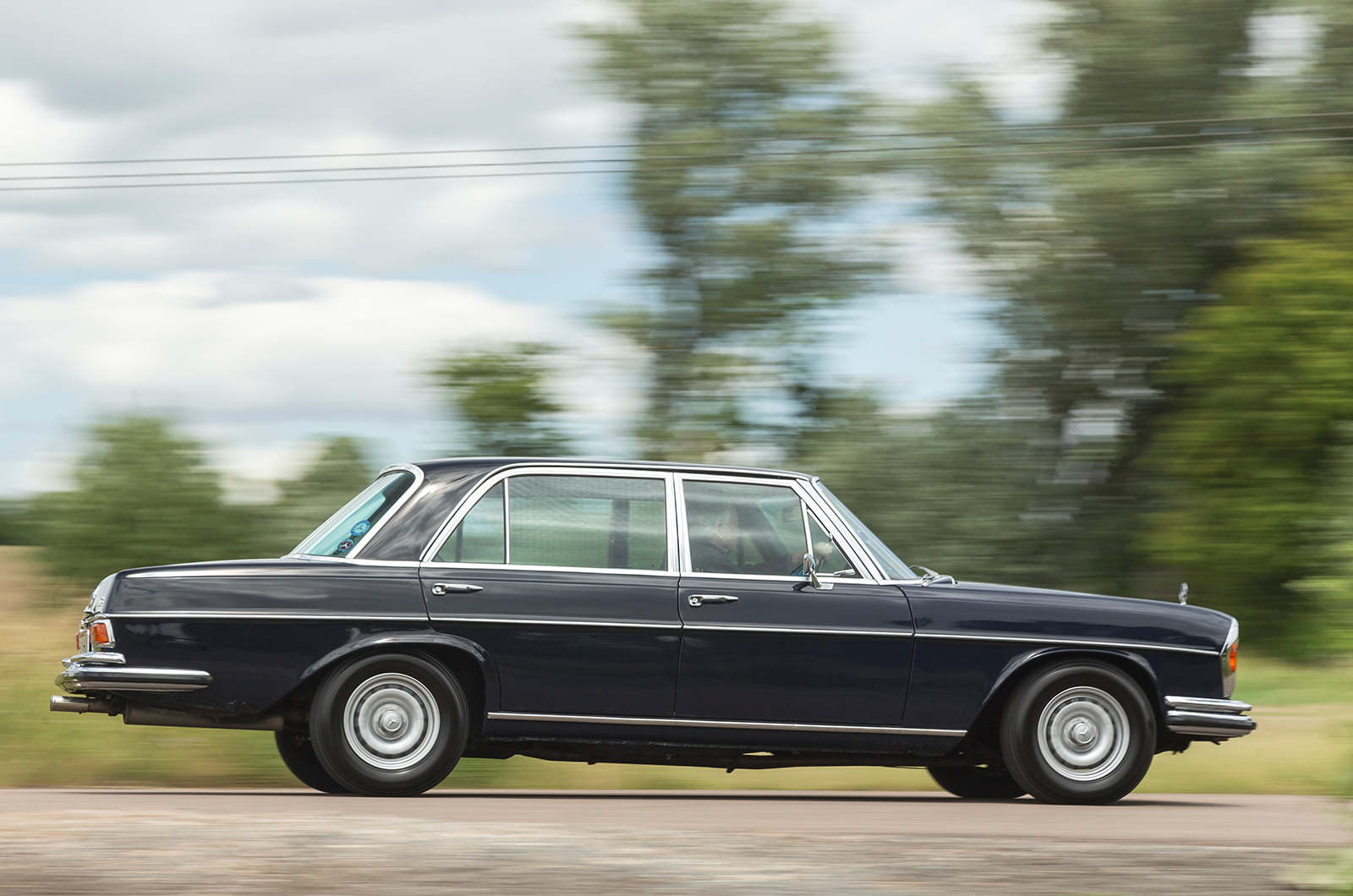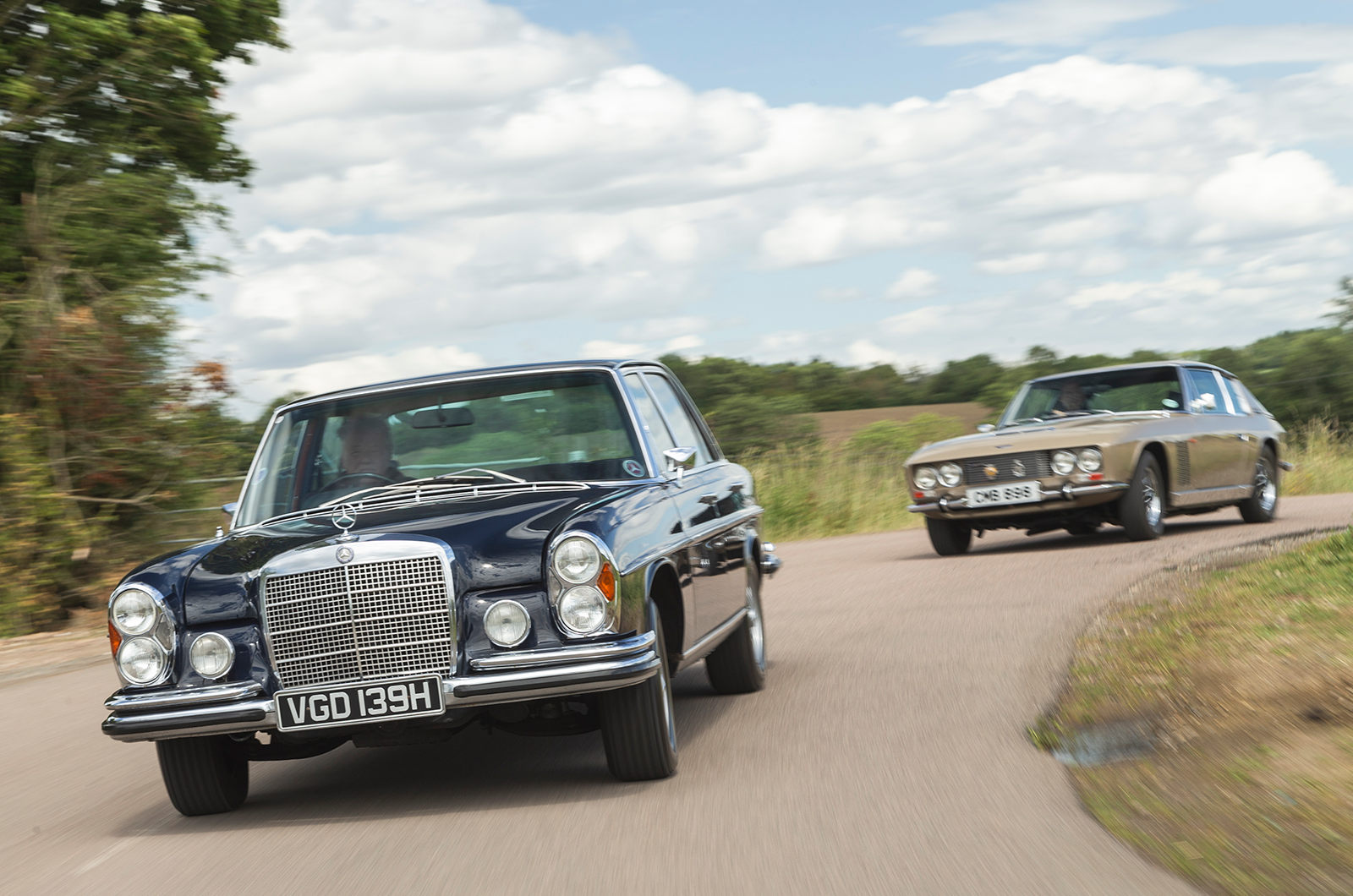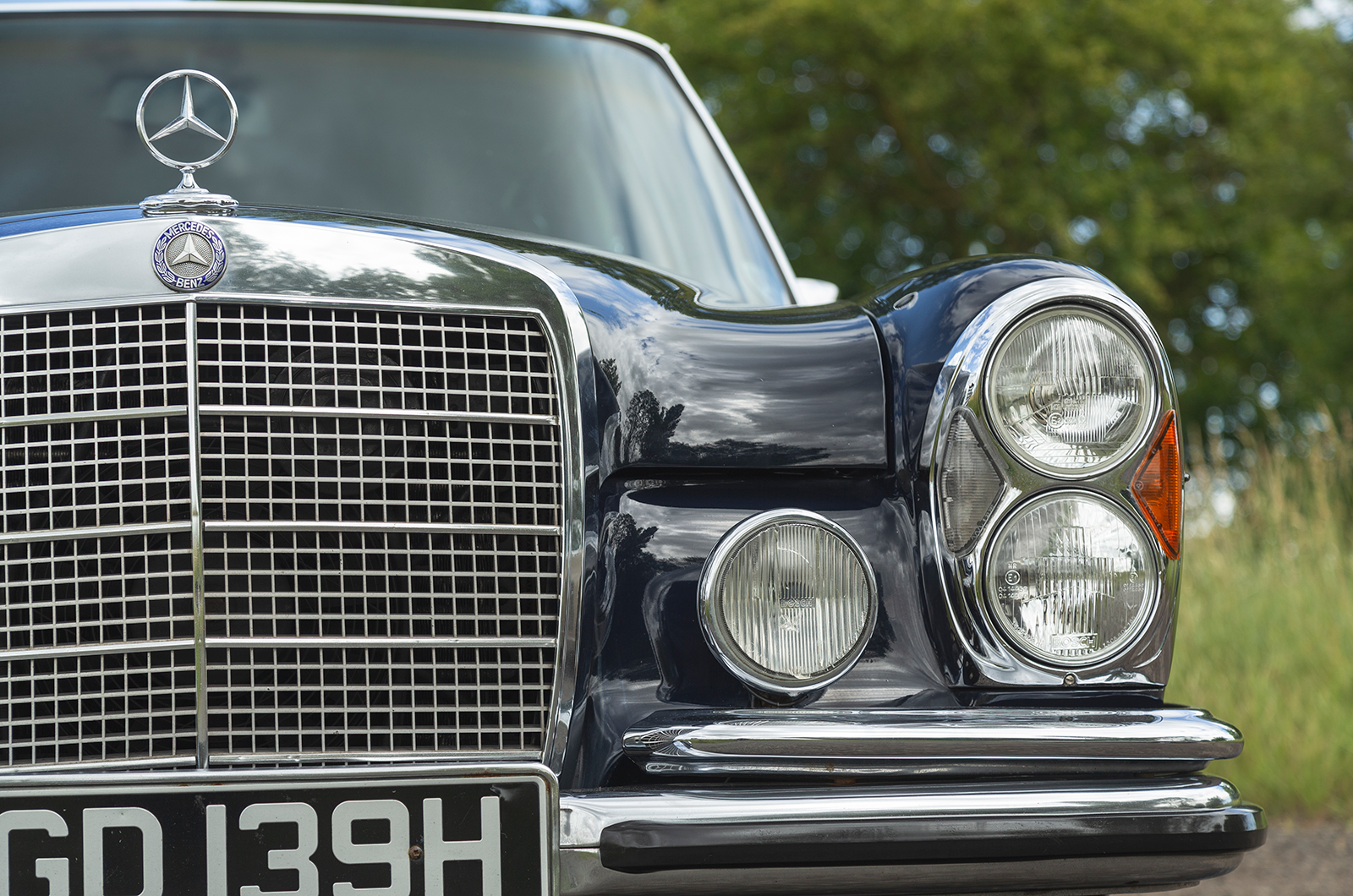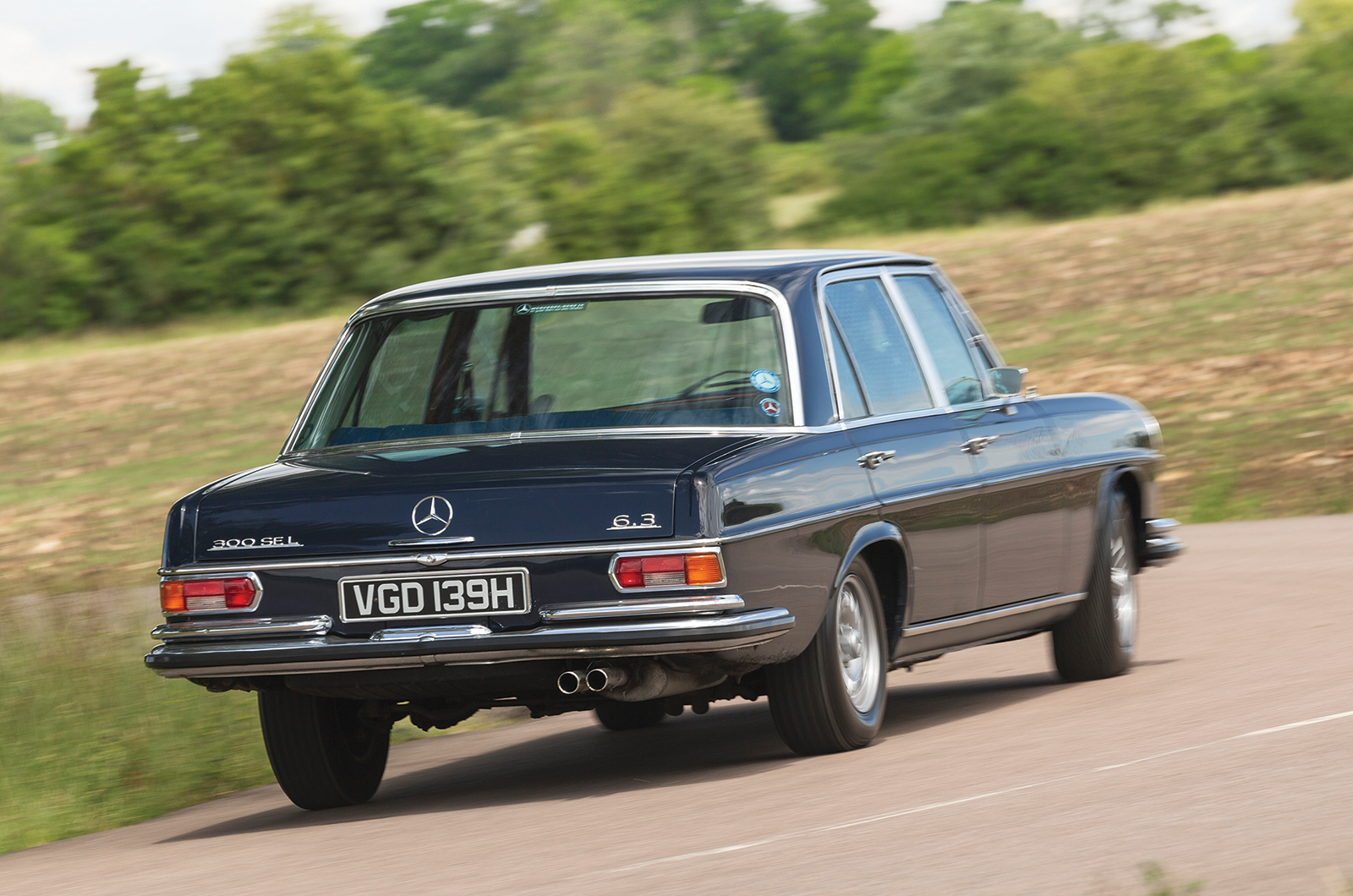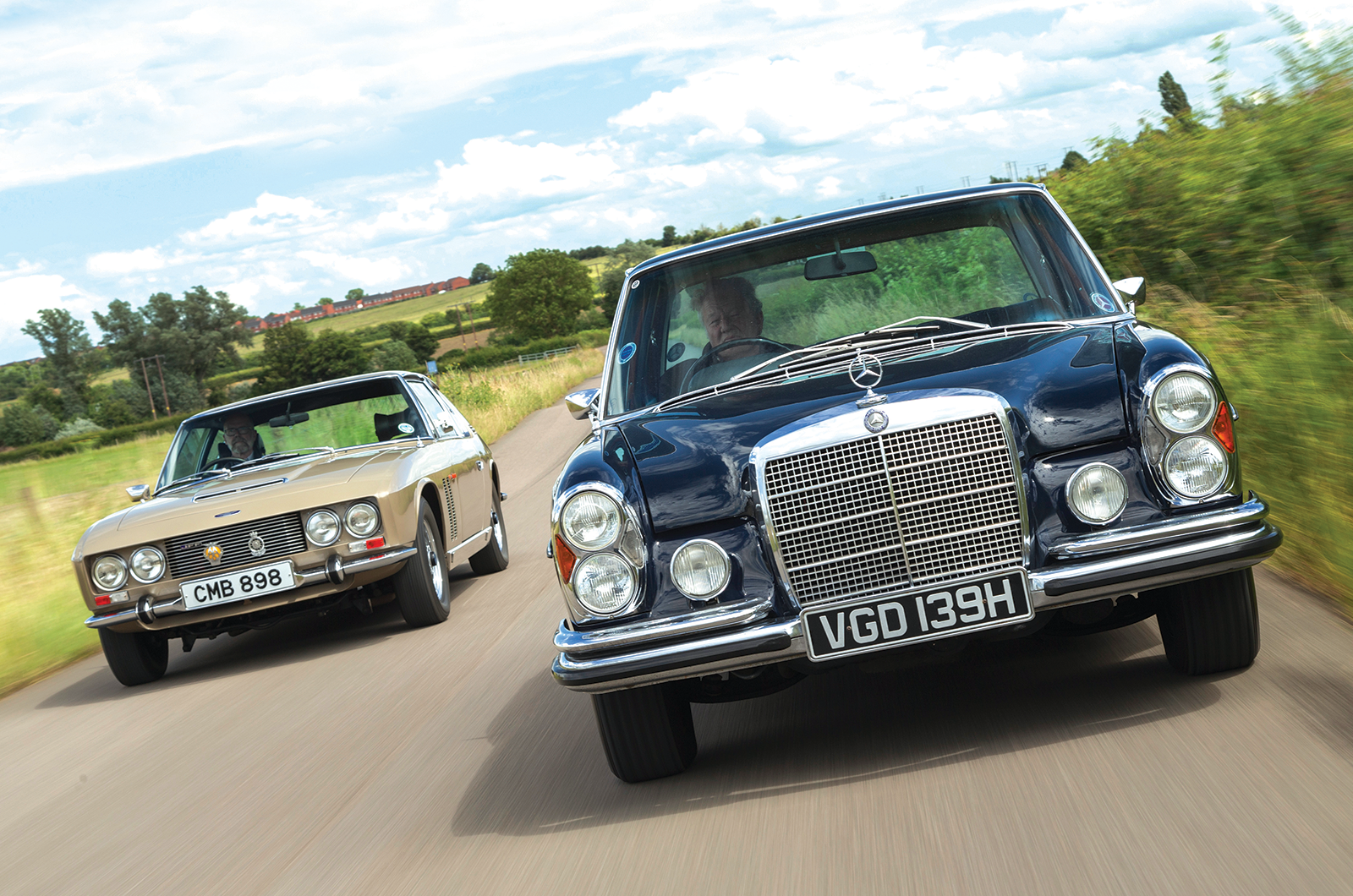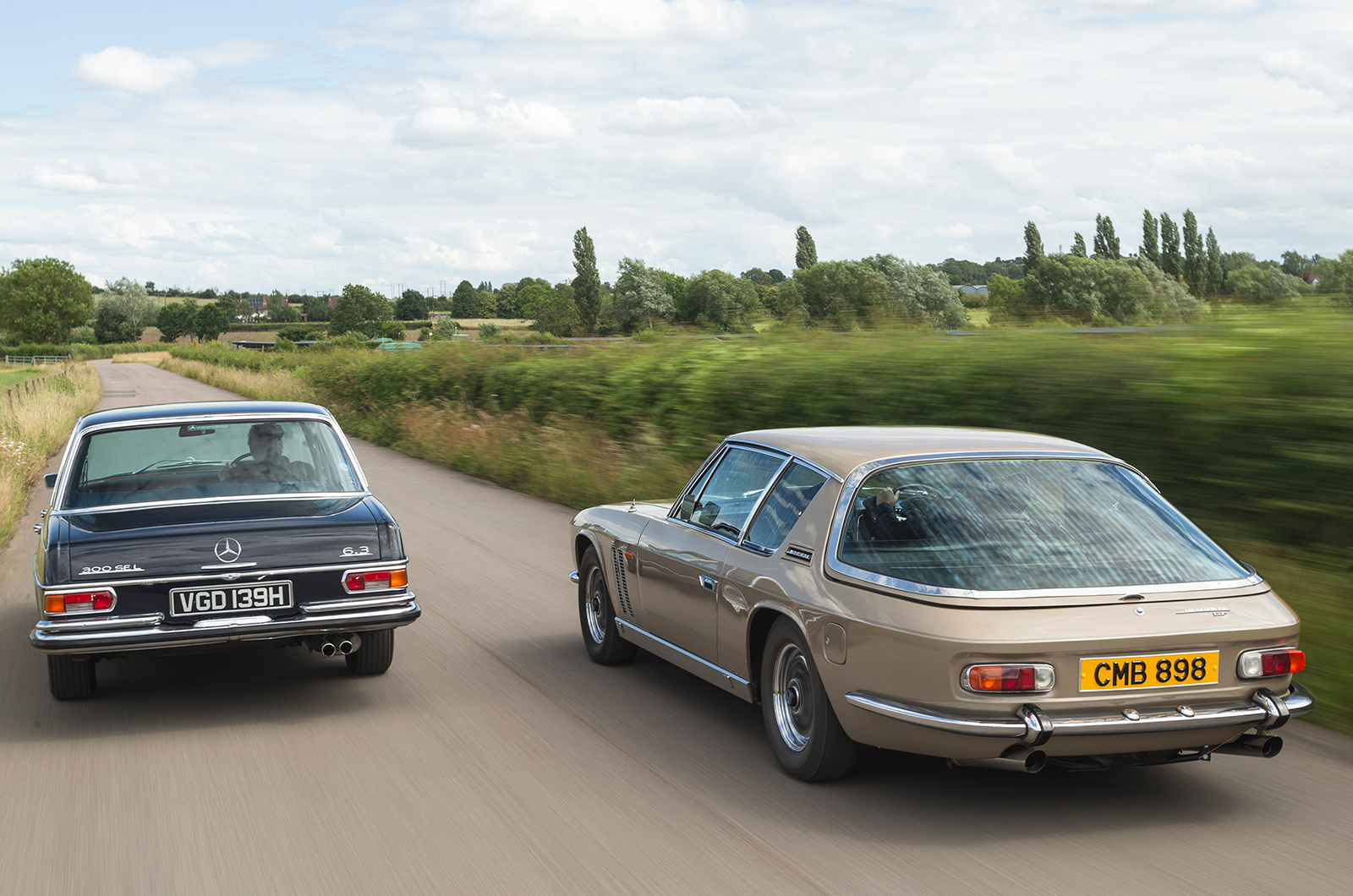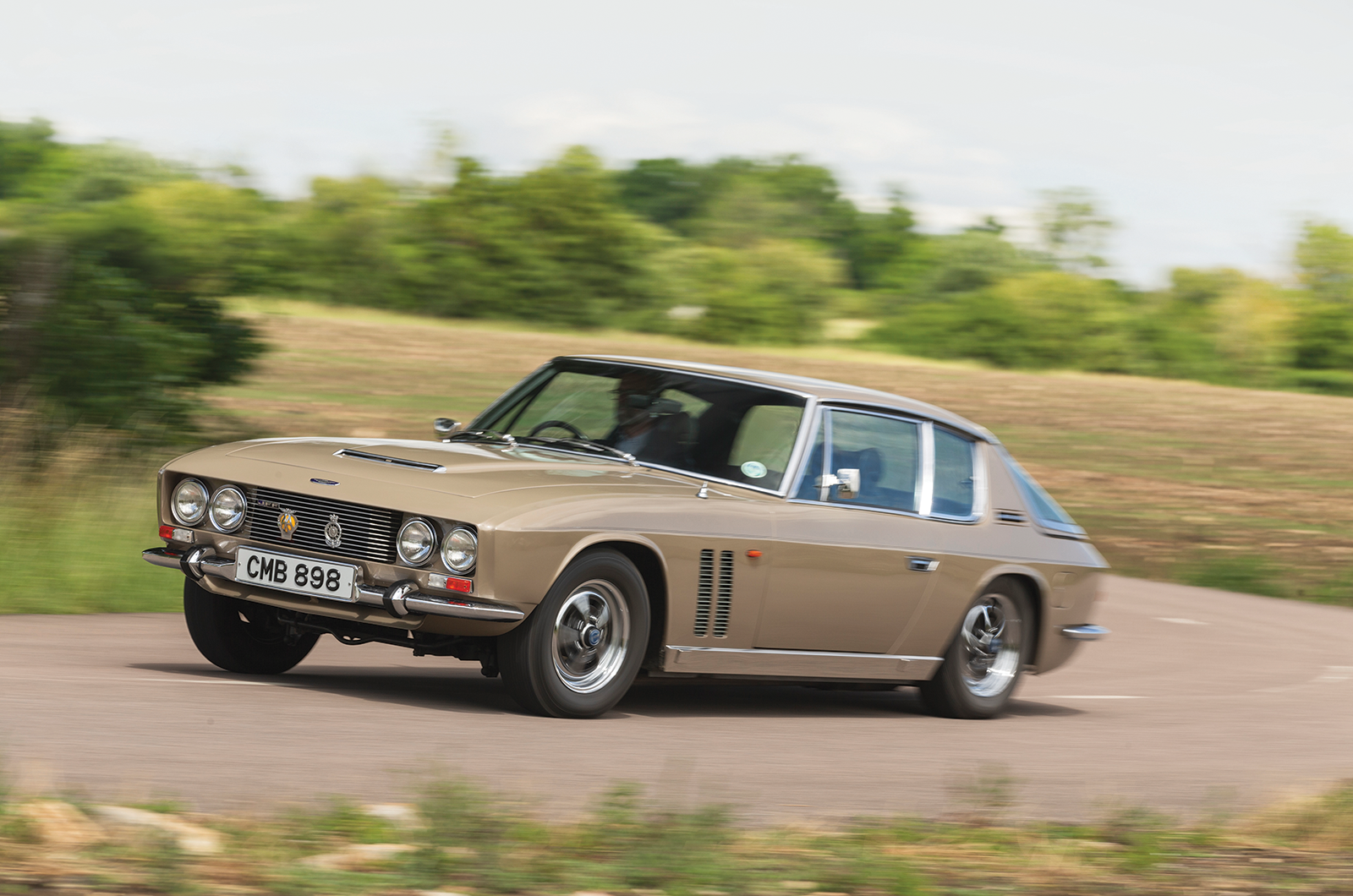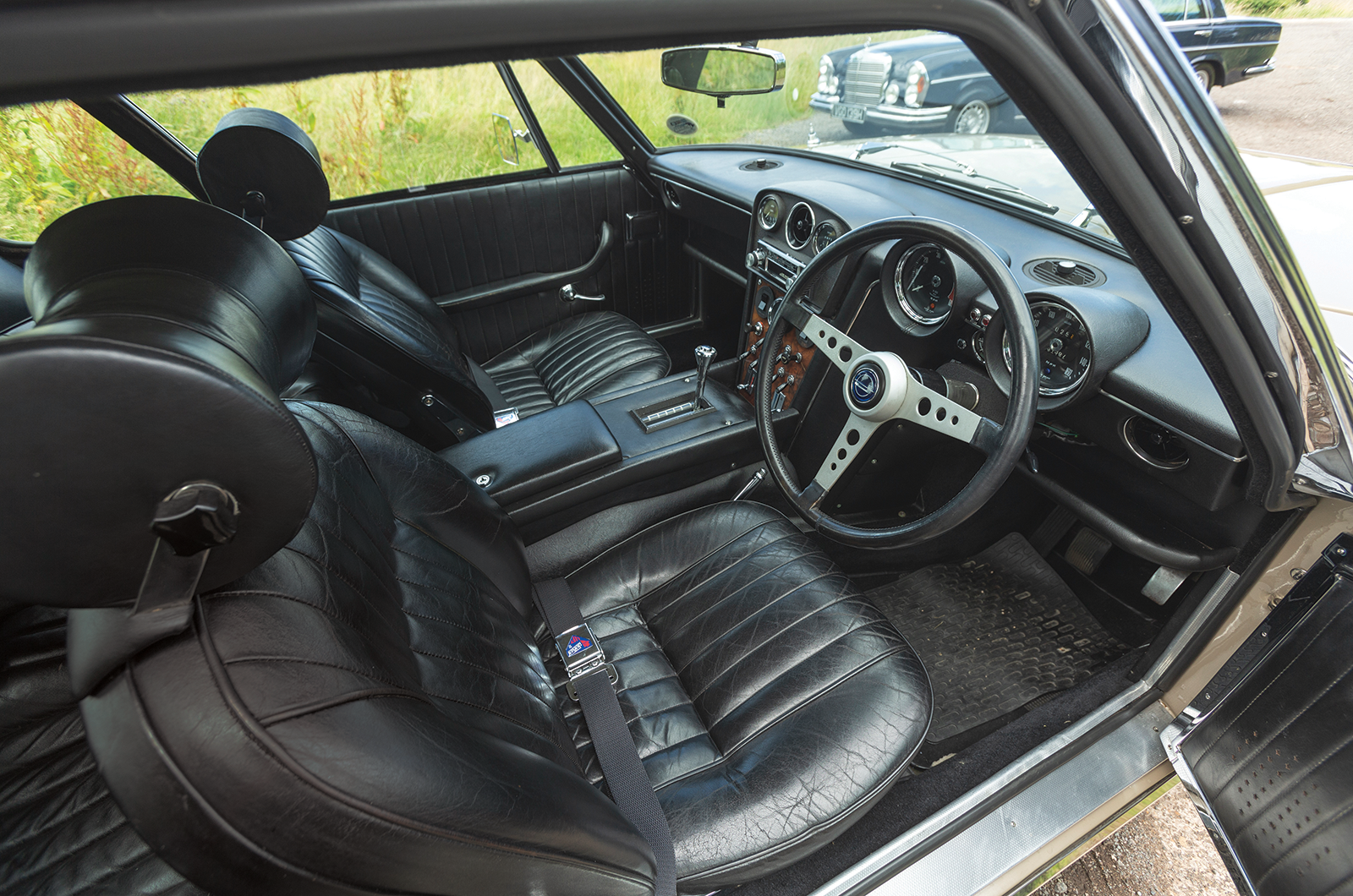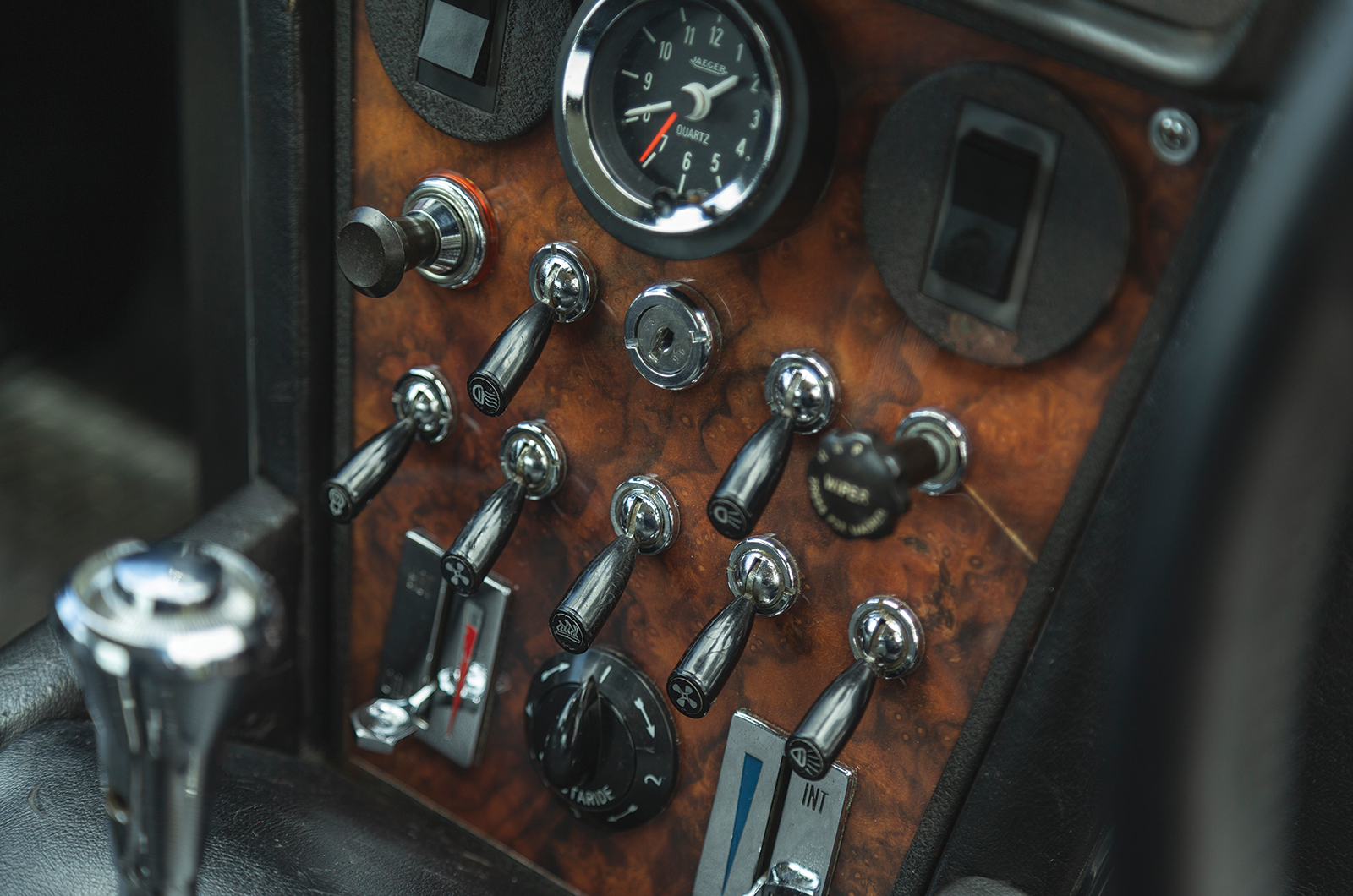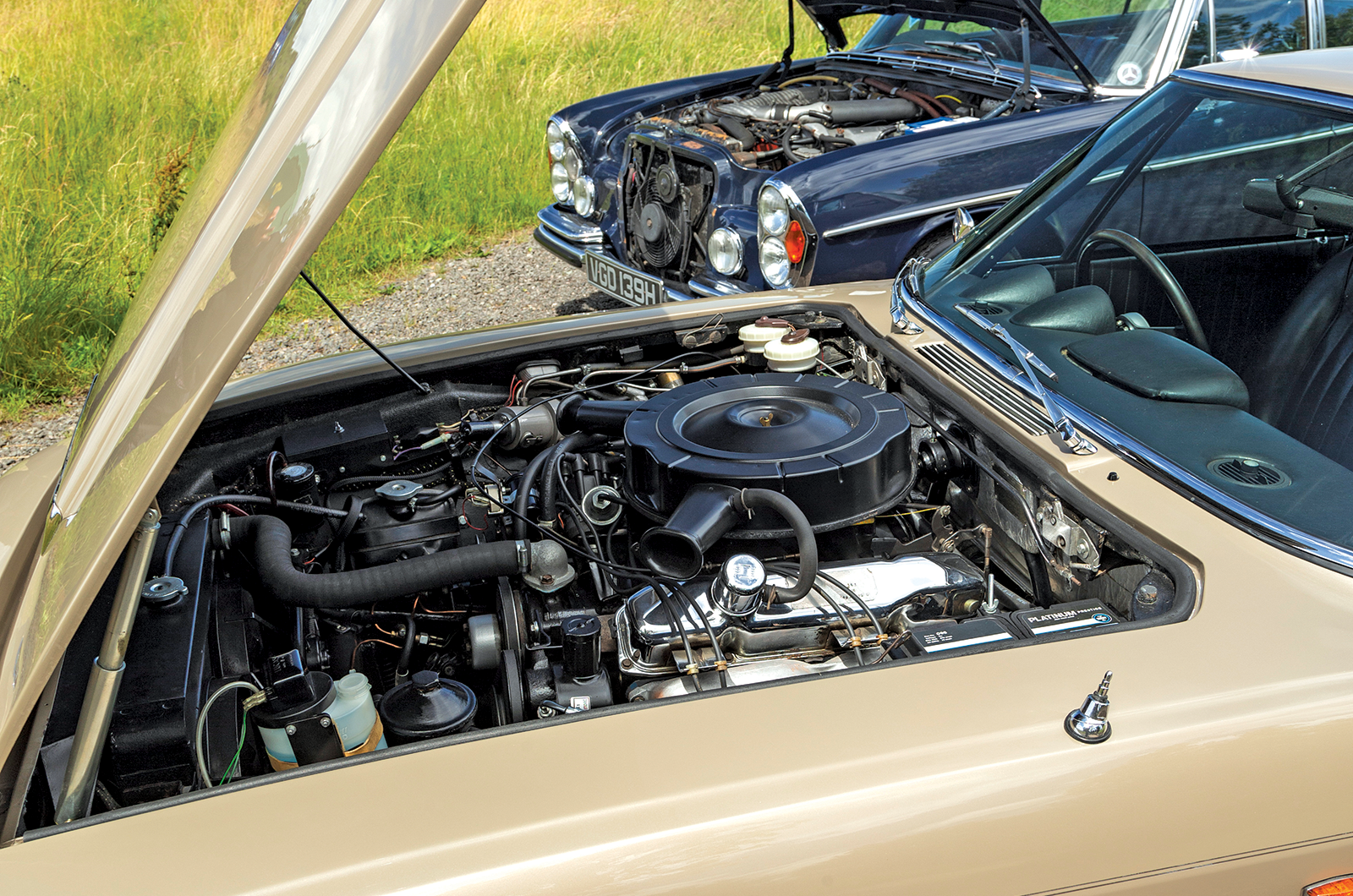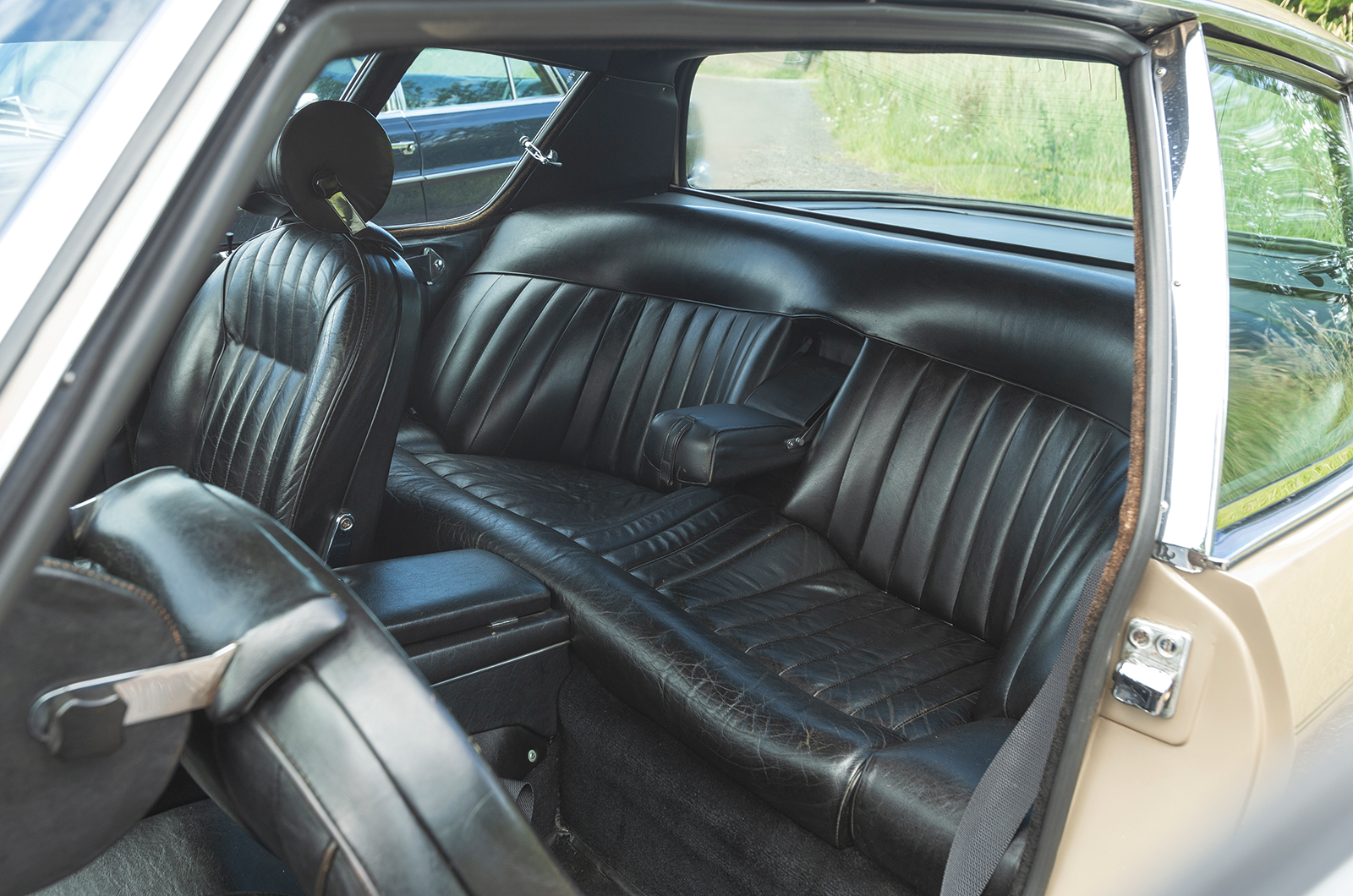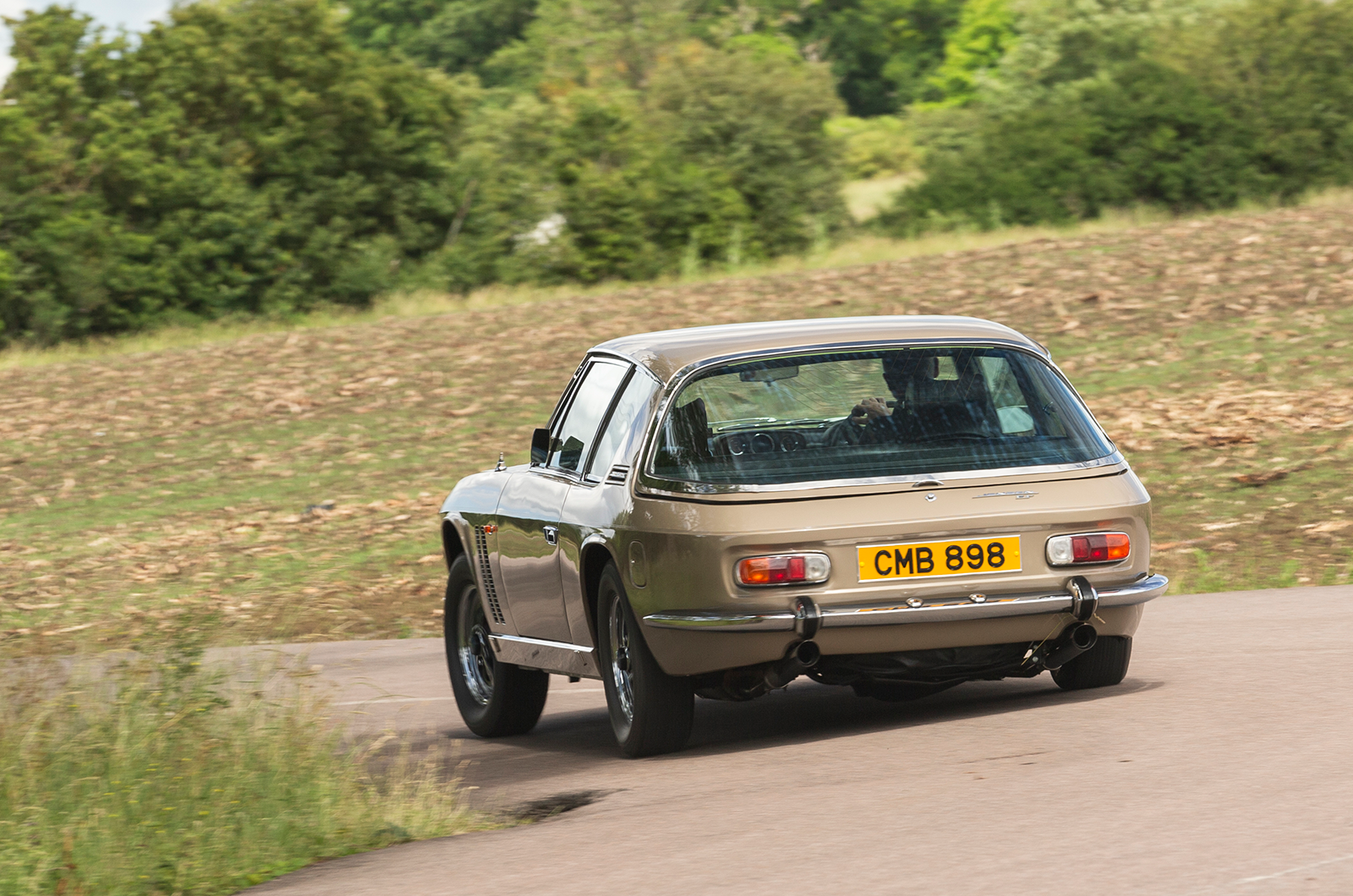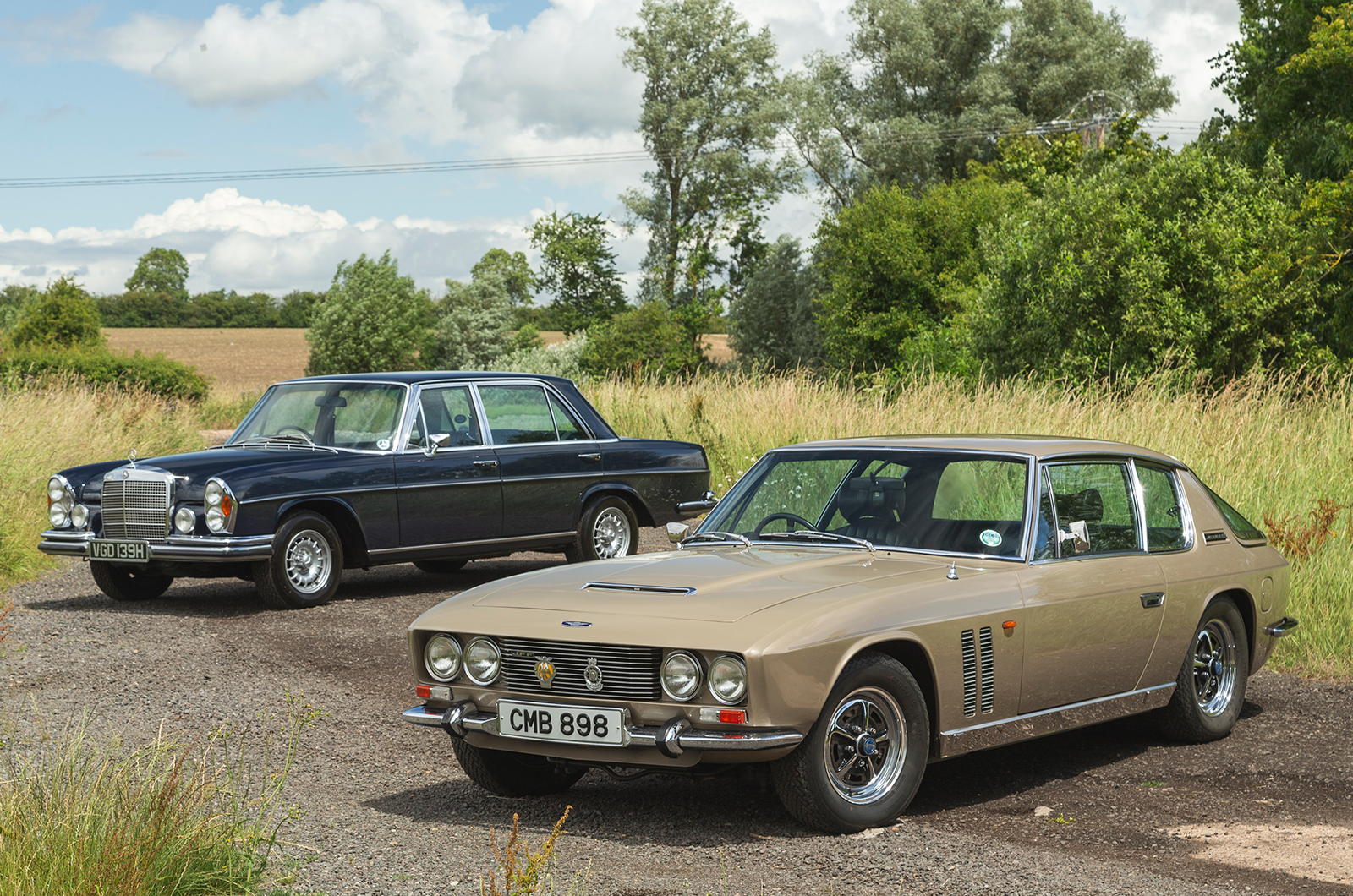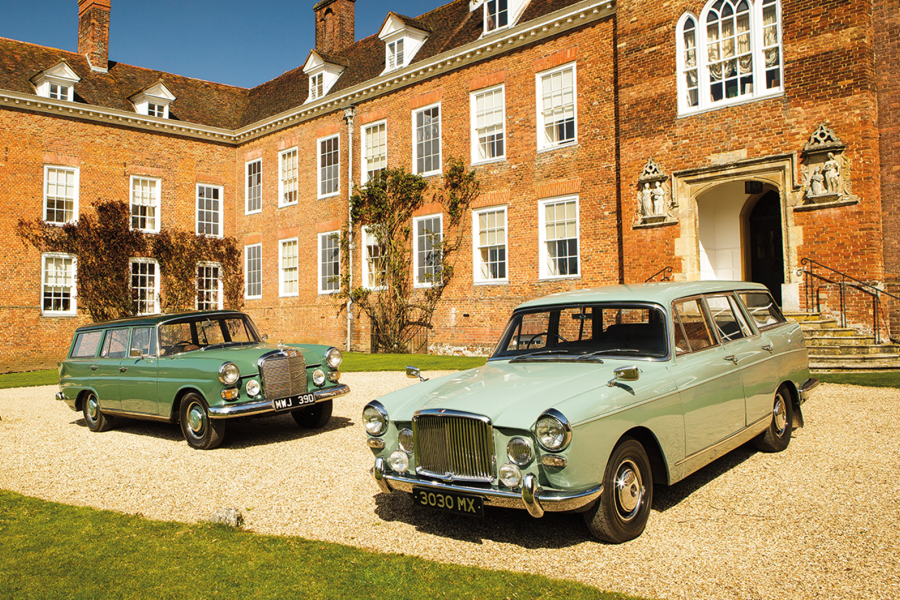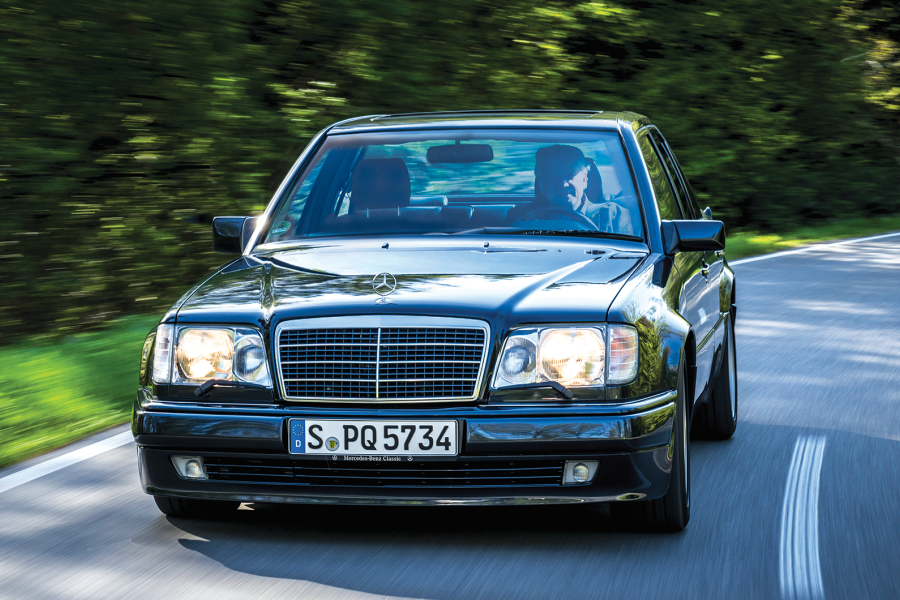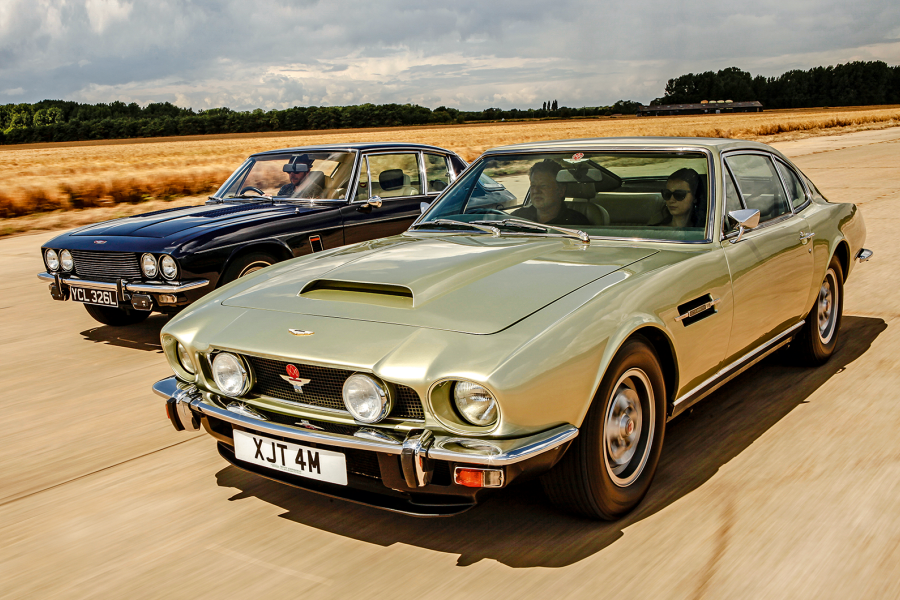The gearbox in the Merc is set up to pull away in second – probably to protect the drivetrain components – but you can get first by pushing past the resistance at the end of the throttle travel, resulting in plumes of expensive smoke from the Michelin XWXs and slow, attention-grabbing progress until you ease up.
Driving the Jensen FF allows you to relish the low-slung driving position
The M100’s rev limit is modest – 5100rpm – but Bosch mechanical injection dumps fuel in such generous measures that the throttle response at tickover cannot be anything other than satisfyingly sharp.
Even now there is something epic and instant about the way this Mercedes gathers speed with that thrusting, visceral top-to-third kickdown.
With enough torque to easily break the rear wheels loose on tight corners – even in the dry – this thundering brute of a car appeals to the hooligan in everybody.
The Jensen’s stylish ‘Guinness bottle’ switches and Selectaride rear damper control
With four speeds to the Jensen’s three – and a pure fluid coupling rather than a torque converter – the Mercedes’ gearchanges are not so much jerky as positive, with the delicate little selector lever very much there to be used for extra braking control in third as the big saloon gobbles up another straight.
I surprised myself by preferring the steering of the Mercedes, which had more feel than the Jensen’s powered rack.
Aimed at a fast-approaching curve, the 6.3 rolls quite a lot and feels nose-heavy, but the self-levelling of the air bags curbs front-end dive effectively and the car is well-behaved and balanced on the brakes, with the air springs giving a level of supple refinement that the Jensen’s coils and semi-elliptic leaves do not even pretend to match.
The Jensen FF’s Chrysler-sourced V8 engine packs 425Ib ft of torque
Not that the Jensen rides poorly: the generous sidewalls of its tall tyres and the damping effect of its sheer mass see to that.
But what the FF lacks in ultimate refinement compared with the Mercedes, it tends to regain in the tidy, viceless handling that comes with the higher cornering abilities and superior traction afforded by its vaunted Ferguson four-wheel-drive system.
Turn in, floor the throttle and the back of the FF simply follows the line of the front with grip to spare. It’s a boon to fast, stable A-to-B progress once you are attuned to the over-light but accurate steering.
Marketed as a ‘close-coupled saloon’, rear space in the Jensen FF is limited
It was a revelation in 1967 and remains impressive, even if fast-improving tyre and suspension technology had already begun, by the time of the FF’s demise, to cause some critics to question the need for such complication in a road car whose capabilities most buyers didn’t have the skill to exploit.
The disparity in looks, image and number of doors doesn’t really matter here.
It seems that the Jensen FF and Mercedes-Benz 300SEL 6.3, while products of two very different engineering philosophies, were tasked with remarkably similar missions in life: to provide the fastest, safest and most luxurious land travel possible for four adults, virtually irrespective of price.
The Jensen’s superior traction out of corners is afforded by the Ferguson four-wheel-drive
For me they are two of the truly great cars of the 1960s and early ’70s.
That I’m not alone in this assertion is reflected in the prices asked – six figures are common – and the paucity of cheap, tatty examples of either machine.
Yes, Mercedes 6.3s were cheap, once. Around 25 years ago I could have bought a not-so-scruffy 300SEL 6.3 for two grand but walked away.
Then, as now, it is a brave soul who takes on either car as a project – a person has to know their limitations – but if I had the money to buy a ‘proper’ example of either car, I think I would find the more dashing, more significant and much rarer Jensen FF hardest to resist.
Images: Luc Lacey
Thanks to: SL Shop; Paul Lewis, Jensen Owners’ Club
Factfiles
Mercedes-Benz 300SEL 6.3
- Sold/number built 1968-’72/6526
- Construction steel monocoque
- Engine iron-block, alloy-head, sohc-per-bank 6332cc V8, Bosch mechanical fuel injection
- Max power 250bhp @ 4000rpm
- Max torque 369Ib ft @ 2800rpm
- Transmission four-speed automatic, RWD
- Suspension independent, at front by double wishbones rear low-pivot swing-axles; telescopic dampers, air springs, anti-roll bar f/r
- Steering power-assisted recirculating ball
- Brakes discs, with servo
- Length 16ft 8in (5080mm)
- Width 5ft 11¼in (1808mm)
- Height 4ft 7½in (1408mm)
- Wheelbase 9ft 4in (2845mm)
- Weight 3800Ib (1724kg)
- 0-60mph 7.1 secs
- Top speed 134mph
- Mpg 15
- Price new £7743
- Price now £80-100,000*
Jensen FF
- Sold/number built 1967-’71/320
- Construction tubular steel chassis, steel body
- Engine all-iron, ohv 6276cc V8, Carter four-barrel carburettor
- Max power 325bhp @ 4600rpm
- Max torque 425Ib ft @ 2800rpm
- Transmission three-speed automatic, 4WD
- Suspension: front independent, by double wishbones, twin coil/damper units, anti-roll bar rear live axle, semi-elliptic leaf springs, telescopic dampers, Panhard rod
- Steering power-assisted rack and pinion
- Brakes discs, with Dunlop Maxaret anti-lock
- Length 15ft 11in (4851mm)
- Width 5ft 10in (1778mm)
- Height 4ft 5in (1346mm)
- Wheelbase 9ft 1in (2769mm)
- Weight 4012Ib (1820kg)
- 0-60mph 7.7 secs
- Top speed 131mph
- Mpg 11-14
- Price new £6000
- Price now £100,000+*
*Prices correct at date of original publication
READ MORE
Bentley S1 vs Mercedes-Benz 300b: peace makers
Dream drop-tops: Aston vs Mercedes vs Citroën vs Jensen vs Rolls
Buyer’s guide: Jensen Interceptor and FF
Martin Buckley
Senior Contributor, Classic & Sports Car
